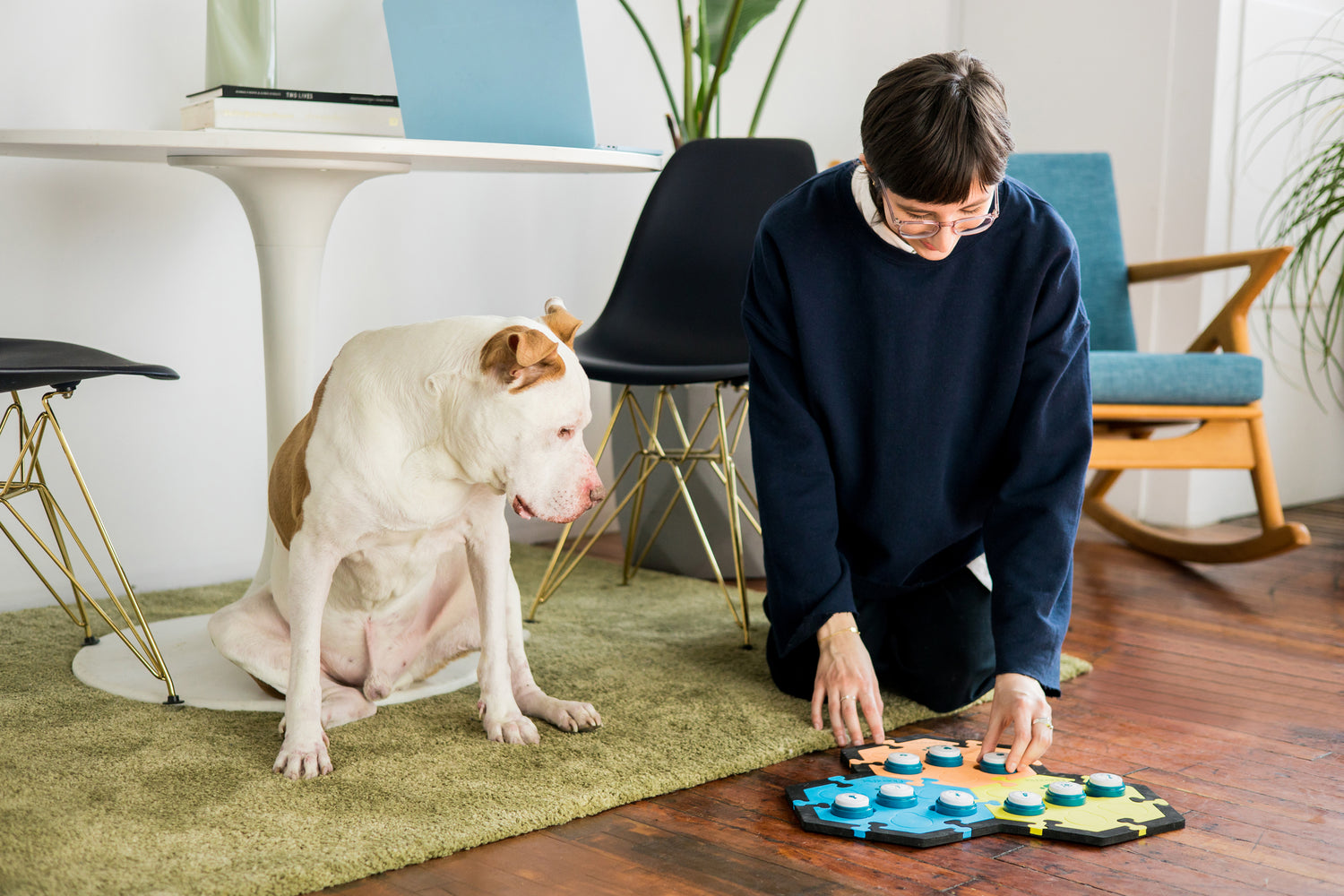Feeling a bit discouraged because your dog or cat hasn’t started using their communication buttons yet? Don't worry, you're not alone. Many button teachers experience the same initial challenges. However, just because you haven’t seen that "aha" moment yet doesn’t mean it’s not on the horizon. Here are eight encouraging signs that your furry friend might be closer to communicating through buttons than you think.
8 Signs of Button Progress
They’re listening. Notice if they look at you or appear to be actively listening when you speak to and model concepts for them. If they turn their head or tilt their ears toward your voice when you speak, that’s a sign that they’re paying attention.
They recognize certain words. Pay attention if they respond appropriately to words you say to them such as running to the back door when you say “outside.” Words they already recognize are great choices for early buttons.
They’re trying to communicate with you. Increased attempts to communicate with you via natural body language and/or vocalizations are great signs. It’s also good if they begin initiating more interactions with you. Whether it’s a greeting stretch when you enter the room or a gentle nose boop to get your attention, the more responsive you are, the more they’ll try to communicate.
They recognize your routine. If they begin anticipating routine activities like feeding or walk times it shows they have a strong grasp of your daily routine together. Keep modeling buttons for these familiar and predictable concepts!
They watch you. It’s a good sign if they are engaged with and focused on you when you approach and use the soundboard to model buttons.
They investigate the soundboard. Praise them for showing any interest in the soundboard such as approaching, looking at, or sniffing it. Wait to react until you can tell they weren’t about to interact with it so you don’t accidentally interrupt them.
The soundboard becomes more valuable. Your learner may begin recognizing the soundboard is valuable and start spending more time around it or even lying on it. Cats, especially, seem to lie on the soundboard before they begin using it themselves.
Button presses become familiar and mean good things. Does your learner come running when you press a button to see what grand and exciting thing you have in store for them? Watch for signs that your learner recognizes the meaning of a concept when you press that button. Look for ear perks, head tilts, increased excitement, or best of all— an appropriate response to a button that was just pressed. For example, they might run to the door when OUTSIDE is pressed or grab a toy when PLAY is pressed.
What to Do in the Meantime…
Be patient and persistent. For most cats and dogs (learners), learning how to use buttons appropriately doesn’t happen immediately. While some pick it up quickly, others can take weeks or months to “get it”. However, once they get it, things start moving faster. Keep working at their pace and learn to recognize signs of progress so you can celebrate even the smallest of breakthroughs!
Give them time to think. Keep in mind that they process things more slowly than we do. Give them time to process after you say or ask something, even when talking to them normally. Watch your learner’s behavior and try to give 15-45 seconds of thinking time before moving on. This gives them time to think and helps them know it’s their turn to talk or react.
Consider target training. Many learners benefit from target training which helps them practice the physical act of pressing buttons. Cat learners, especially, often require this to encourage them to apply enough pressure to activate buttons.
Don’t overwhelm them with too many buttons in the beginning. Start with 1-3 buttons that are adequately motivating to your learner. You can consider introducing more once they learn the locations and meanings of buttons they currently have.
At the end of the day, button teaching is about spending quality time with your learner. It’s about trying new things and exploring the world together. What better bonding activity than improving how well you understand and communicate with one another? No matter how quickly or how far you progress in your learning journey, the important part is that you enjoyed your time together along the way. Now go celebrate your efforts and your amazing learner!




Leave a comment
This site is protected by hCaptcha and the hCaptcha Privacy Policy and Terms of Service apply.